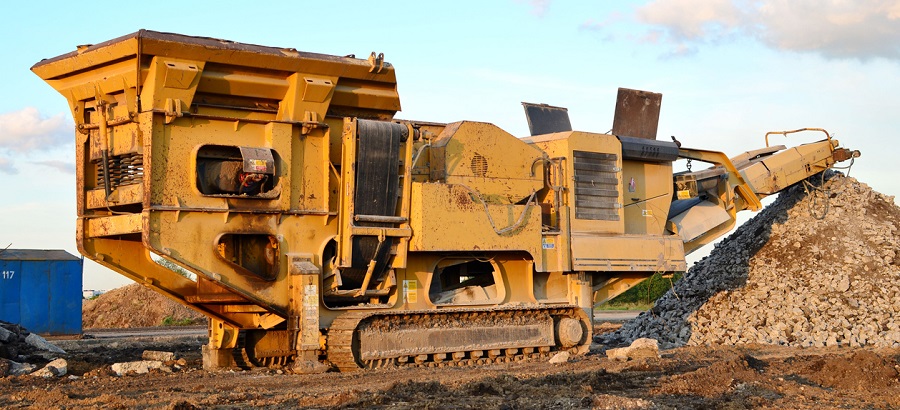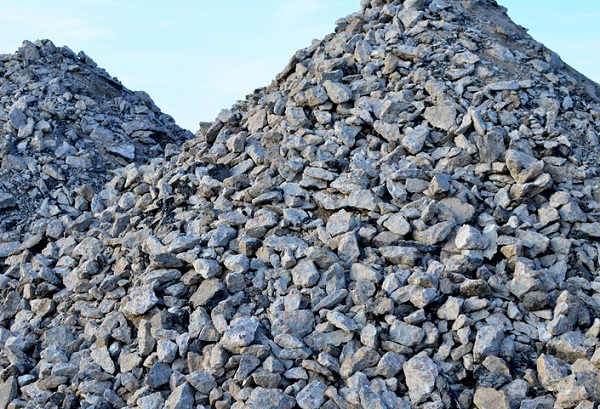What are Aggregates in Construction?
Reading time: 5 minutes
Importance of aggregates in the construction industry: What are aggregates used for?
Within all forms of construction, aggregates are highly versatile, and they can help to form strong foundations and bases for both small and large projects. As well as providing cost-effective natural drainage, aggregates are the essential base for concrete, mortar and asphalt. These strong natural materials compact to give concrete its strength and durability, they offer natural water resistance and heat dissipation, and can give an attractive finish.
However, the mining of aggregates has had a negative impact on the environment around us, and they are a finite resource. For this reason, the use of recycled aggregates has become more popular, to offer a more sustainable solution.
Primary and secondary aggregates
Primary aggregates are natural granular materials and/or minerals, such as gravel and sand, which are directly mined or collected from the natural world for use in building and landscaping projects. Secondary aggregates are by-products, slate chippings for example, or are sourced in other ways, such as producing industrial slag waste or recycling pre-used aggregates, and are more commonly used for drainage, concrete and road building.
What are the main types of aggregates?
Gravel
This coarse primary aggregate can be sourced from river beds, gravel pits and the sea floor, and is one of the most commonly used aggregates in the industry. As well as offering many properties of good aggregate material, being strong, durable and providing excellent drainage, gravel is versatile and ideal for driveways, foundations and mixed to form concrete slabs.
Crushed stone
Crushed stone can be made by crushing primary aggregates - including limestone or granite - or grinding recycled stone materials from demolition sites. It is commonly sold as MOT Type 1 (coarse crushed stone) and MOT Type 2 (more finely crushed stone) for different uses. Crushed stone is great for sub bases, backfilling and trench work, but it can also be used for decorative pathways and even bespoke flooring and worktops.
Sand
Including ballast sand and sharp sand, this fine primary aggregate is widely used within construction and landscaping. As well as for backfilling, levelling and laying paving, it’s an essential ingredient of concrete and mortar for house building. Recycled sand is gaining popularity as a more eco friendly alternative to traditionally quarried sand.
Concrete
Concrete is a composite, made using aggregates and other materials, for essential construction purposes. Often made with gravel and sand, concrete aggregate properties make it ideal for forming a durable base, or being made into blocks for walls, floors and other structures. Crushed concrete is also a common aggregate, made using recycled concrete (RAC), creating a versatile coarse aggregate for building and landscaping.
Clay
Clay is a porous primary aggregate and offers key properties of lightweight aggregates - making it useful for making lightweight blocks, roof tiles and other precast structures. Clay is dug from the ground and heated to form larger materials or pellets, used throughout the construction, water and agricultural industries.
Topsoil
As the name suggests, topsoil is taken from the top layer of earth, and comprises organic matter and minerals. Topsoil is commonly used by landscapers and gardeners, for everything from back-filling to growing plants and creating raised beds. It can be divided into economy, standard or premium topsoil, depending on its intended use and budget.
Recycled aggregates
Recycled aggregates are secondary aggregates, sourced and processed from construction waste, demolition waste or as by-products of crushed materials. Common recycled aggregates include re-used gravel, slate, sand, asphalt, crushed stone, bricks, blocks, slag and recycled concrete aggregate (RCA). As well as possible cost savings, recycled aggregates offer a more environmentally sustainable solution for the construction industry.

Properties and characteristics of aggregates
Different aggregates offer a range of benefits for all sorts of projects and uses. The properties of good aggregate materials vary in different industries, so they’re graded and divided based on their strength, mineral properties, porosity, density, texture, shape, size, absorption, abrasion resistance and characteristics for their intended task.
Size and shape
Aggregates can be divided into categories by their texture, granular shape, size and dustiness. Fine aggregates are separated by their size, being 4.75mm or smaller, while the physical properties of coarse aggregate mean they can be 4.75mm to 18mm in size. MOT Type 1 sub-base aggregates (hardcore) are usually 0-40mm in size, MOT Type 2 sub-bases are 0-20mm and MOT Type 3 aggregates are typically 5-40mm.
Grading
The grading of aggregates shows the particle size and distribution using a sieve analysis. There are commonly four grades: uniformly graded aggregates (particles the same or similar size), well graded aggregates (various sizes creating a dense selection), gap-graded aggregates (containing only a small amount of mid-size particles, meaning increased air voids) and open-graded aggregates (with only a small amount of small particles, with more air voids).
Durability
Depending on what aggregates are needed for, durability and strength will be key factors for use. Different aggregate materials offer naturally different strength to weight ratios, and the quality of the aggregate will also depend on whether it has any weathering or chemical damage, and whether it’s bonded or mixed in with other materials. Gravel and stone can also vary in shape and texture, from rounded to flaky and angular, which affects its durability and strength. Angular aggregates are usually preferred as high strength concrete aggregate properties, due to their excellent bonding abilities, whereas flaky and rounded aggregates are popular for decorative use or ordinary concrete in smaller ratios.
Absorption
Aggregates can be quality assessed using their moisture content and water absorption rate. A moisture metre is used to determine its porosity rating. It’s vital to know an aggregates’ absorption rate for drainage purposes, as well as for the correct concrete mixing ratios. Aggregates which absorb 10% of the weight in moisture are too porous for concrete, but might be ideal for landscaping purposes.
What are the properties of good aggregates?
Ideally, good aggregates should be well processed, pure, come from a consistent source and not include additional debris, chemicals or other minerals in the mix. They should be dense, hard and strong, as well as being clean and fully dry before use.
Good physical properties of coarse aggregate vary from being uniform and rounded to very irregular in size and shape, depending on the desired surface area for its use, the required strength and drainage ability plus the overall finish. The grading, moisture absorption, shape, size, durability and weight of the aggregate will help determine how suitable it is for each task. The properties of lightweight aggregates should have a particle density of 2,00 Mg/m3 (2000 kg/m3) or below.
What are aggregates: FAQs
What are aggregates used for?
Aggregates are an essential material in construction, as they are ideal for creating drainage, assisting with load bearing, protecting key areas, filling in, building hard bases, for decoration and mixing to make mortar and other materials. They are used in building, landscaping and all forms of construction.
What is an aggregate in construction?
Aggregates are granular building materials, including crushed stone, sand, slag and gravel, which have been sourced or recycled for use within construction. They can be fine, coarse or medium-grained, come in a variety of sizes, and are famously the most-mined natural materials in the world.
What are the 4 main types of aggregates?
The four main types of aggregates are gravel, crushed stone, sand and concrete. Construction aggregates can be freshly-mined raw materials, or recycled from previous construction projects to help protect the environment.
What are the examples of aggregates?
As well as sharp sand, gravel, crushed stone and crushed concrete, other examples of aggregates include slate, ballast, MOT, slag aggregates, rounded or angular aggregates, topsoil, grano dust, natural coarse aggregates and recycled aggregates.
What are the most common aggregates?
River gravel and sharp sand are the most commonly used aggregates within construction, followed by crushed stone and crushed concrete. Type 1 MOT for road building and for sub bases, topsoil for landscaping, and geosynthetic aggregates for engineering purposes are also popular.
Is aggregate the same as gravel?
Gravel is a type of aggregate, but there are many more materials in this category - from sand to slag. Aggregates are grains and/or fragments of natural rock, and gravel is the most widely-used construction aggregate throughout the world.
There are many types of primary and secondary aggregates available, each of varying size, price, appearance, durability, absorption, bonding ability and strength to weight ratios, so it’s vital to choose the most suitable material for your project. Your local Travis Perkins branch can help advise you on grading, finish and ideal uses for different aggregates.
For more advice on building materials, landscaping and construction, visit the Travis Perkins Trade News and Advice hub for tips, information and inspiration
Disclaimer: Information displayed in this article is correct at the time of publication, but note that legislation changes periodically. The information contained on this page is intended as an overall introduction and is not intended as advice from a professional building control officer. Travis Perkins aims to avoid, but accepts no liability, in the case that any information stated is out of date.




